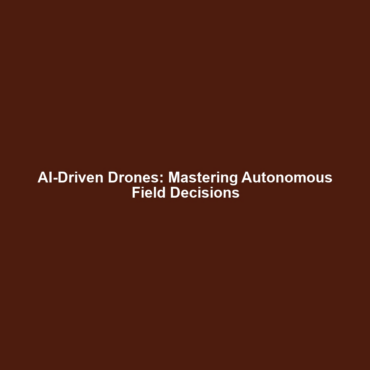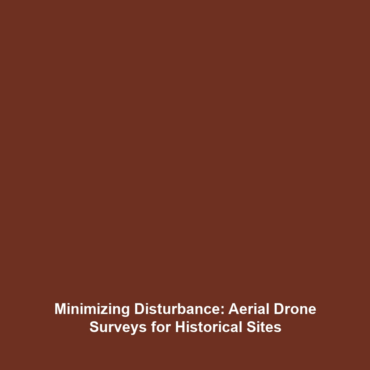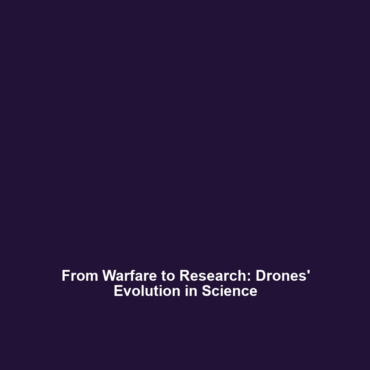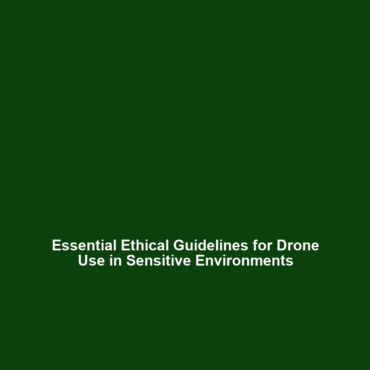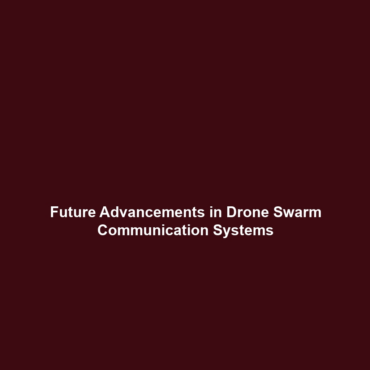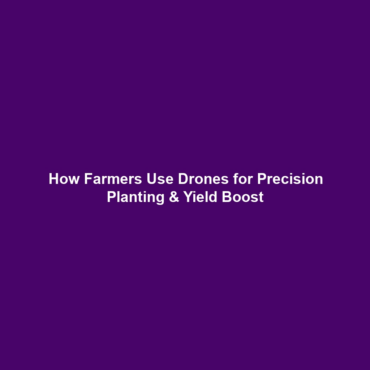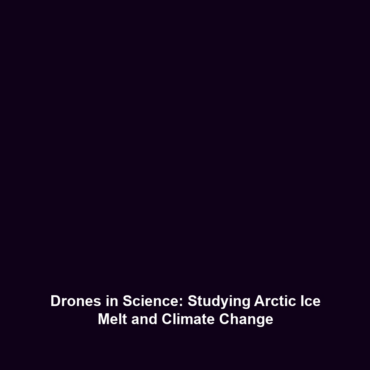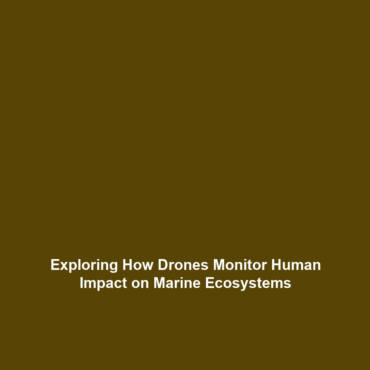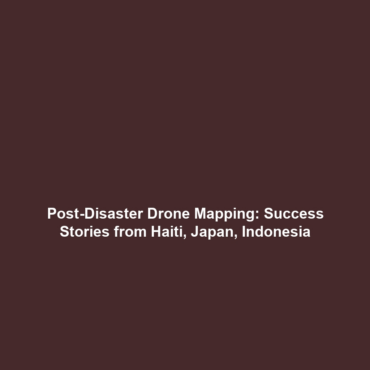AI-Driven Drones: Autonomous Decision-Making in Scientific Fields
Introduction
The integration of AI-driven drones into scientific fields marks a revolutionary advancement in how data is collected and analyzed. These drones possess the ability to make autonomous decisions in real time, enabling them to identify key data points that are essential for research. This capability enhances efficiency in data collection, thereby significantly improving outcomes in various scientific disciplines, including agriculture, environmental monitoring, and disaster management. As technology continues to evolve, understanding the role and significance of drones in science becomes increasingly critical.
Key Concepts
Understanding how AI-driven drones operate requires a grasp of several core principles:
Autonomous Decision-Making
These drones use machine learning algorithms to analyze environmental data, allowing them to make independent decisions based on pre-established criteria. This capability is integral to enhancing the accuracy of data collection in scientific research.
Data Identification and Analysis
AI-driven drones can sift through vast amounts of data rapidly. By identifying key data points, they can assist researchers in making informed decisions swiftly—transforming how data is interpreted in scientific methodology.
Applications and Real-World Uses
The applications of AI-driven drones in the field of science are vast and varied:
- Agricultural Monitoring: Drones equipped with AI can autonomously analyze crop health and soil conditions, providing farmers with essential insights for improved yield.
- Environmental Conservation: These drones can help track wildlife populations and monitor habitats, making them invaluable in biodiversity studies.
- Disaster Response: In emergencies, AI drones can assess damage and locate victims faster than traditional methods, showcasing their effectiveness in life-saving scenarios.
Through these applications, we see how AI-driven drones are used in various scientific fields, enhancing data collection and analysis capabilities.
Current Challenges
Despite their advancements, several challenges impede the widespread adoption of AI-driven drones in science:
- Data Privacy Concerns: Collecting data in sensitive areas raises ethical questions regarding privacy.
- Regulatory Hurdles: Navigating the legal landscape for drone operations can be complex.
- Technical Limitations: Issues such as battery life and weather dependence can hinder their effectiveness in critical situations.
Addressing these challenges of AI-driven drones is essential for their sustained integration into scientific research.
Future Research and Innovations
The future of AI-driven drones in science appears promising, with ongoing innovations including:
- Enhanced Machine Learning Algorithms: Future developments aim to refine algorithms for better predictive analytics.
- Improved Battery Technologies: Next-gen batteries promise increased drone flight times, enabling longer missions in the field.
- Integration with Other Technologies: Collaborations with AI-powered software can advance data analysis, creating more comprehensive research tools.
Such innovations are pivotal for advancing the efficiency and capabilities of drones in scientific endeavors.
Conclusion
AI-driven drones are transforming the landscape of scientific research by enabling autonomous decision-making in data collection. Their ability to identify key data points not only facilitates improved research outcomes but also positions drones as integral tools across various disciplines. As innovations continue to emerge, the integration of AI-driven drones into scientific practices will undoubtedly shape the future of research methodologies. For further reading on related topics, check out our articles on drones in agriculture and environmental monitoring technologies.
